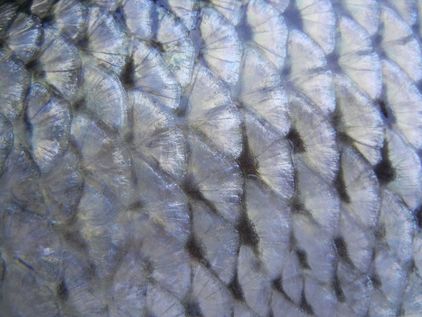Food Waste: Cash in Trash

Food Waste: Cash in Trash
Sustainable fashion is increasingly popular among consumers, and companies are responding by focusing on technical innovation, improved efficiency and related mission orientation. In 2017, 42 out of 100 brands revealed that their suppliers are shifting to a circular economy. The fashion industry is looking for more sustainable sources in creating their designs, even adopting the use of biomaterials such as food waste. Let’s meet 4 companies that are into sustainable fashion.
1. Sport Clothing from coffee grounds:
4 years of research and development has led to a patented process that removes the phenol, ester and oil from coffee grounds and turns them into yarn. The yarn can be used in a variety of different products, from outdoor and sport performance apparel to household items. Thanks to the coffee grounds, the fabrics offers up to 200% faster drying time compared to cotton. Moreover, the micro pores on the yarn absorb odours and protect against UV rays.
Due to the increasing demand for this invention, a partnership with local coffee shops has developed to collect their used coffee grounds. These spent grounds provide a sustainable and efficient source of raw material. As their advertising says: ‘Drink it, Wear it!’ [1]
2. Coffee ink:
The only printing company in the world using ink made from used coffee grounds to produce dyes for screen printing can be found in California. Coffee is a natural pigment, and it turns out that used coffee does the same job as unbrewed grounds. The incredible technique, which involves mixing the used grounds with vinegar (as a fixative) followed by straining and cooking down the liquid until matching the thickness of the commercial ink, enables printing on a variety of fabrics, creating rich graphics that stand up to wash and wear. Slightly more than 2 litres can print 200 t-shirts. They even offer a customized t-shirt with your own spent grounds. This company is smart and sustainable, as there is no waste from chemical discharge and vinegar is by far cheaper than ink. [2]
3. Bags and shoes from discarded fish skin:
By 2030 we will be producing 185 million tons of fish globally. Of this 50% is considered food and 50% waste which will equate to 92.5 million tonnes of waste per year. As only 30% can be converted into fish meal for animal feed, 65 million tons will remain unaccounted for and the likely outcome is that it will be dumped into the sea. [3]
Fashion brands have found a stylishway to use this by-product of the fishing industry by converting it into furniture, bags and belts. Fish leather is an ideal use for such applications, as not only can it be visually striking, but it is also the second strongest leather known, thus providing an ideal end of life solution for otherwise discarded fish waste. [4]
Fish leather manufacturers also promote the use of fish skin as a sustainable alternative to increasing cow leather production as well as creating jobs in areas of production such as Iceland.[6]. Yet there are a number of concerns about the eco-credentials of manufacturing accessories from fish leather and there is need for a detailed comparison with cow leather to fully validate this claim. Despite this, the fact remains that fish leather does add substantial value to what is otherwise a waste product, giving this area significant potential.
4. Shoes from Corn:
Corn is usually thought of as a food or food additive, but corn has uncountable uses and it can be found in many products that are part of our daily routines. The most valuable part of the corn plant is the grain, but what happens to the discarded part? A vegan shoe company based in Spain has developed shoes from organic vegetable matter using the inedible parts of corn. The shoe sole is made of recycled natural latex rubber from floors, which in addition to being sustainable and comfortable due to its flexibility and shock absorbing capacity, is also supercool. [7]
Hopefully these fascinating examples have caught the attention of our more fashion loving readers who have an interest in sustainability. Want to keep up to date? Here are some great sources to follow:
[1] S. Café Sustainable Performance. (2015). Brand Story [online] Available at: http://www.scafefabrics.com/en-global [Accessed 22 Feb. 2018].
[2] Domestic Stencilworks. (2018). Coffee Printing. [online] Available at: https://www.domesticstencilworks.com/collections/coffee-printing [Accessed 22 Feb. 2018].
[3] THE WORLD BANK. (2013). FISH TO 2030. Prospects for Fisheries and Aquaculture. [online] Available at: http://documents.worldbank.org/curated/en/
458631468152376668/pdf/831770WP0P11260
ES003000Fish0to02030.pdf [Accessed 22 Feb. 2018].
[4] Braw,E. (2014). Prada, Dior and Nike are finding a fashionable new purpose for fish skins. [online] The guardian. Available at: https://www.theguardian.com/sustainable-business/sustainable-fashion-blog/2014/oct/16/fish-skins-fashion-leather-prada-nike-dior [Accessed 22 Feb. 2018].
[5] The Fish Leather Company (2015). Fish Leather A Non-Wastage Material. [online] Available at: http://thefishleather.co/fish-leather-eco-friendly-non-wastage-material/ [Accessed 22 Feb. 2018].
[6] Atlantic Leather (2016). PIONEERING FORCE IN THE MIDDLE OF ICELAND! [online] Available at: http://www.atlanticleather.is/thestory/ [Accessed 22 Feb. 2018].
[7] Slowwalk (2018). Vegan shoes - Slowwalk creates the shoes of corn skin. [online] Available at: https://www.slowwalk.es/en/vegan-sneakers [Accessed 22 Feb. 2018].